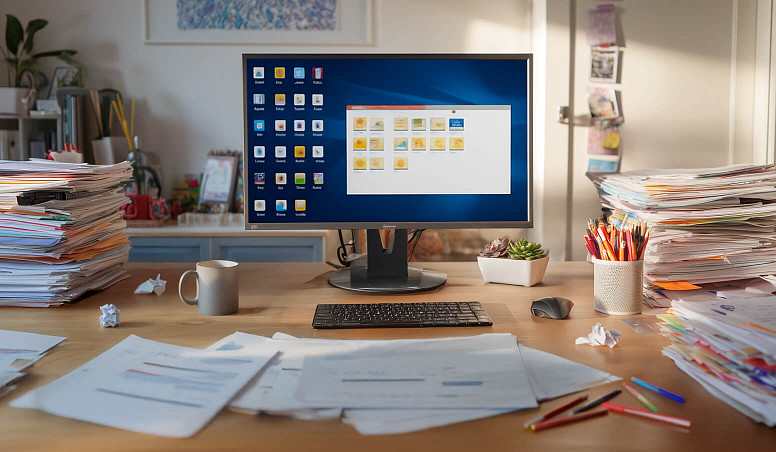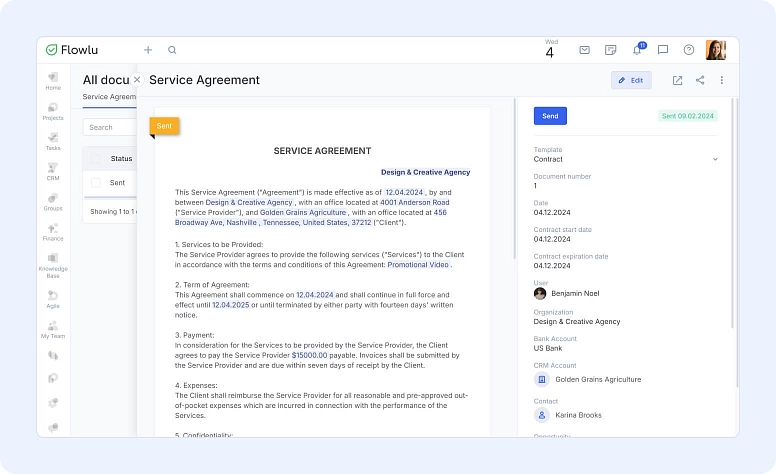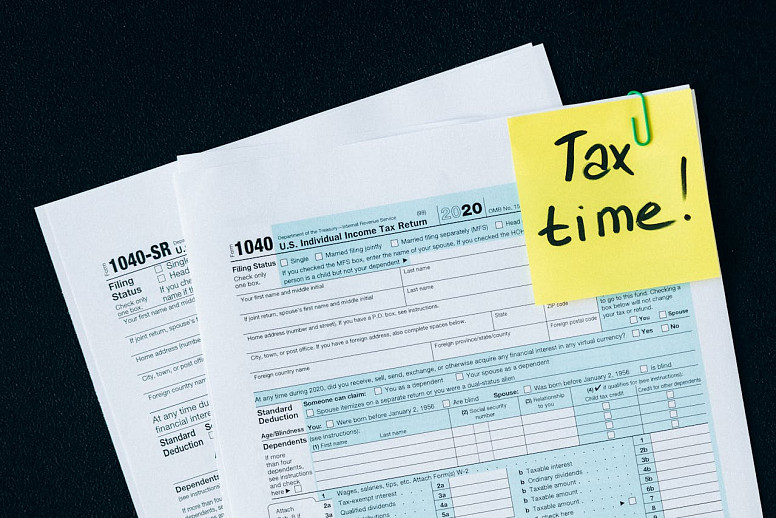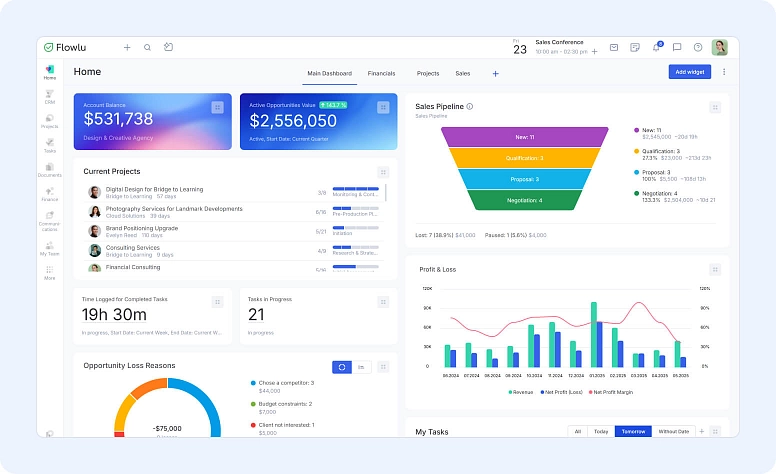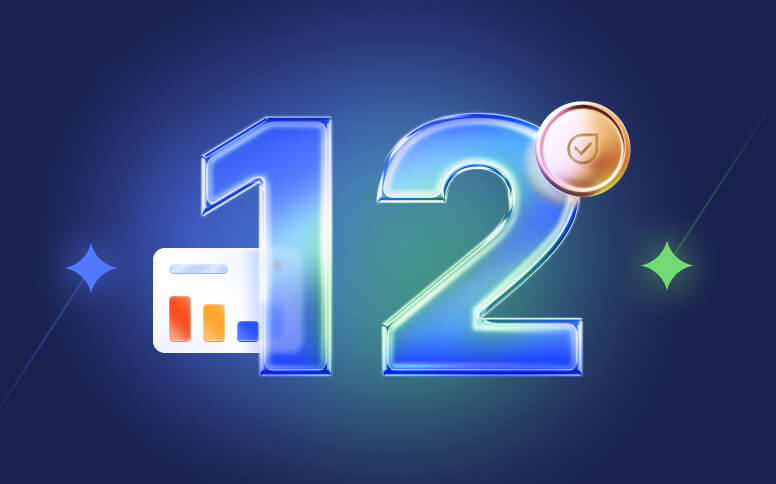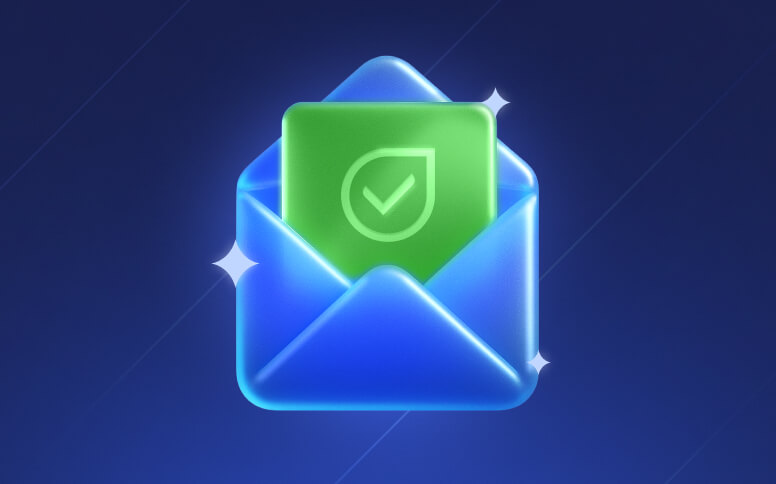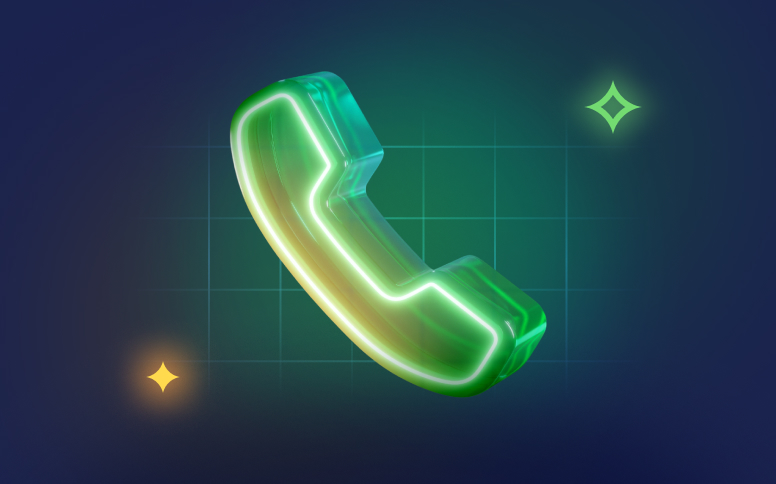How to Start Freelancing: Step-by-Step Guide for Beginners
When most people think of freelancing, they immediately think about having total freedom to work whenever you want, doing what you like, and where you want. And in many ways, this is true. After all, when you become a freelancer, you get to choose who your clients are as well as your projects.
If you’d like to understand how to begin freelancing, you’re in the right place. Keep reading to learn what freelancing is and how to start it. We’re going to give you a step-by-step roadmap to follow.
What Is a Freelancer?
Simply put, a freelancer is someone who is self-employed. As a freelancer, you’ll be hired for your skills and knowledge in specific areas. The job will be done on your terms: you decide how many hours you work each week, where you work, and you may even decide whether to take on a project or not. Ultimately, you can see freelancers as their own business.
Freelancing is not a small niche anymore. Today, about 1.57 billion people — nearly 46.6% of the global workforce — work as freelancers or independent workers.
Before You Start: Preparing for Freelancing
Before you jump into freelancing, you need to prepare a little. First, think about your skills. Ask yourself: what things I can do good that people will pay for? It can be writing, design, coding, teaching, or even organizing.
If you don’t have real experience yet, you can still make a small portfolio. Do some sample projects, volunteer for friends, or create your own practice work. This will help you show new customers what you can really do.
Also, be sure you have the basics ready: a good computer, internet, and the software or tools you need for your work. Having your workspace ready will save you time later.
How to Work as a Freelancer?
If you’re new to freelancing and trying to find out more about the best industries that hire freelancers, here is a list to take into consideration:
- Digital marketing
- Business
- Accounting and finance
- Creative arts and design
- Technology
- Media
- Health care
- Real estate
Notice that the jobs required vary a lot, but these are the main industries that have been hiring more freelancers in recent years. Freelancing is growing fast. Freelancing platforms are projected to reach a market size of $8.39 billion in 2025, showing how big the demand is for independent talent.
4 Benefits of Freelancing
If you’re looking to start a freelance business, it’s important that you know the main benefits of this type of career:
#1: Flexible schedule
No matter if you already have a job or just want extra income, a flexible schedule is one big advantage of freelancing. You decide when and where to work, only you need to finish before the deadline you agreed with the client.
#2: It’s easy to get started
It’s easy to get started as a freelancer. As long as you have a skill and the necessary equipment to do the job, your initial costs are mainly covered.
#3: Independence
One of the things that keeps attracting more and more people to freelancing is the idea of independence. After all, you don’t have to obey a boss; you’ll be your own boss. This means you’ll have total control over your workload, who you’re contracted by, and at what rate.
#4: More income
Many people believe that the best way to start freelancing is while you still have a job and do it as a second activity. No matter if you choose this path or if you simply want to freelance full-time, this is a great way to increase your income. You’ll be in control of the rates you charge your customers, and you won’t need to wait for another year to negotiate a raise with your boss.
5 Challenges of freelancing
Nothing in life only has positive things. There is always a negative side, and freelancing isn’t an exception. Here are some of the major challenges of freelancing:
#1: Get a good income
When you want to know how to become a freelancer, you need to understand that full income is not easy in the beginning. It takes time to get enough clients and projects to earn good money. Many people think freelancers work only a few hours, but research shows full-time freelancers work around 43 hours per week, almost the same as a regular job.
#2: Inconsistent work
One big advantage of freelancing is you can work as many hours as you want. But sometimes you want to take on more projects, and there is no project or customer. Work is not always continuous, and you can have days or even weeks without a project.
#3: No benefits
If you’ve already been employed by a company or business, you’re used to getting additional benefits paid by the company. These usually include health care, for example. However, now that you’re working on your own, these benefits end.
#4: Tax reports
This is another benefit employees have when working for a business or company: it’s not up to them to report taxes. But as a freelancer, you must take care of this yourself. IRS says self-employed people must file yearly returns and also pay estimated taxes every quarter.
#5: Find a good work-life balance
When you start freelancing, you know you must work hard, especially in the beginning. But later, you may look at your life and see you don’t keep good balance between career and personal life. Work is important, but also spend time with family and meet friends.
Even if these challenges make you think again about freelancing, you can still succeed. If you stay dedicated, believe in yourself, and keep organized, you will be fine.
Step-by-Step Roadmap to Become a Successful Freelancer in 2025
Looking for how to start freelancing? Just read this step-by-step guide that will walk you through everything you need to do.
Step #1: Is freelancing for you?
While this may look like a strange step, we believe you need to evaluate both the benefits and the challenges of being a freelancer. This is why we showed you them right at the beginning of this article.
The truth is that freelancing can be a very profitable business, but it’s not as easy as you may think.
Step #2: Define your services and offerings
Now that you’re sure you want to be a freelancer, it’s time to learn how to get started. This means you need to decide what services you’ll provide. As you probably already know, you’ll be hired based on your skills and knowledge in a specific field or area. So, it’s important to think of all the skills you have and how to market them.
You should take some time to write a small description of the service you’ll be offering. You don’t need to be very specific at this point, but you should have a clear idea of what you’ll provide and what you’ll do.
Step #3: Determine your target audience
To best market your services, you need to promote them to people who are interested in them—your target audience. This is when you should identify the types of clients that need your services.
As soon as you do this, you can start promoting your services. Here are some things that can help you get your first customers:
- Discord and Slack are two forums where you should consider participating and being active.
- Join freelance job posting platforms.
- Start networking.
- Do some advertising and marketing. At this point, consider free solutions first.
Step #4: Get permits or licenses
While this won’t be required for all freelancing activities, some do. You may also need permits or licenses if you’ll be using a business name instead of your legal name. Make sure to check if the service you’ll provide requires licensing or permits, and take care of it at this stage.
Freelancing is not only about finding clients. You also need to think about money and legal things.
When you start, keep your personal money and freelance money separate. Open a bank account only for freelance income. This makes it easier to track.
Always use contracts. A simple agreement that says what you will do, how much you will get paid, and when the project is done. Contracts protect you if problems happen.
Every contract should have:
- What work is included (and what is not)
- Timeline and deadlines
- Number of revisions allowed
- Payment terms (deposit, due date, late fees)
- Who retains ownership after payment
- Kill fee if project stops early
- Communication rules (response times, channels)
Also, choose how you want to get paid. Many freelancers use PayPal, Wise, or Stripe. If you use Flowlu, you can make invoices in the system and get paid faster. Flowlu also keeps contracts, invoices, and payments together, so you don’t need to switch between many apps. This saves time and makes your freelance work look more professional for customers.
Step #5: Think of prices
Determining the prices of your services is crucial, and many freelancers struggle with this step. After all, you don’t want to charge too much or too little.
The first thing you should do is look at your direct competitors and get an idea of how much they’re charging for the same service you’ll be offering. But the process doesn’t end here. You also need to take into account other factors, such as:
- The industry
- The demand for your service
- Your experience
- The client’s location
- The project duration and its complexity
- The deliverables
- The urgency
While it may not be easy to set a rate right away, base it on the information you have. With time, you can always adjust it.
To set your first rate, use a simple formula:
Target monthly income ÷ billable hours = hourly rate.
For example, if you want $2,000 per month and can work 60 billable hours, your rate should start around $33/hour. Remember that not all hours are billable — beginners can expect only 50–60% of their work time to be billable.
Step #6: Build a website
Really, you may be thinking? Yes, really. And this won’t take you a lot of time, we can assure you. With the free tools available nowadays, you just need to spend money on a good domain name and hosting. You can then create a website yourself as well as a portfolio to showcase your services.
All you need to do is customize the most important pages of your website. These include the home page, your service or product page, an about page, the portfolio page, and a contact page. If you want, you may also add a blog about the industry, but this may be too much when you’re just getting started. As soon as you finish your website, optimize it for search engines.
Step #7: Find and retain clients
Now we’re entering the most difficult part: actually finding and retaining clients.
Even though you created a website and joined some forums, you can’t stop there. Your potential customers won’t find you easily this way; you need to actively search for them. Start promoting your services. Here are some things you can do:
Check freelance platforms: One way to get clients is by joining prominent freelance platforms. While you should always look for the most popular ones, also consider platforms specific to your industry and services.
Some examples include:
- Guru: For project management, graphic design, and programming.
- Codeable: For WordPress developer jobs.
- Designhill: For design and art services.
- ServiceScape: For writers.
Pitch through email: Sending cold emails to potential customers is also worth considering. But you need to do it right. Keep your message short and concise, highlight what you can do for them and what you’ve already done for others, and end with a clear call-to-action.
Learn more about what to put in a business proposal email in our guide.
Join prominent communities: Search for the most relevant forums in your industry and learn from both freelancers and clients.
Besides freelance platforms and cold emails, you can also use social media. LinkedIn is very good for professionals. Instagram and TikTok work well for designers or artists. Share your wins, give tips, and talk about your projects.
Content marketing also helps. Write a blog, post case studies, or share tutorials. This shows your skills and brings customers to you.
Don’t forget referrals. Happy clients can recommend you to others. Sometimes this is the easiest way to get steady work.
Managing customers can get messy fast. Our guide on the best CRMs for solopreneurs explains which tools can help you keep contacts, projects, and deals in one place.
Step #8: Maintain a good relationship with your clients
While this may seem obvious, it’s worth stressing. The truth is that it’s much harder to get a new client than to retain one. So, make sure you maintain good relationships with all your customers. Always do excellent work, communicate regularly, build credibility, and go a step further by offering opportunities they may have missed.
By the way, once you start getting projects, you’ll need a way to organize them. Inside Flowlu, you can plan your tasks, track deadlines, and see everything in one dashboard. It functions as a personal workspace for freelancers.
Managing several clients or deadlines? Our article on project management tools for freelancers shows options that make it easier to organize tasks, track progress, and stay on schedule.
Also, it is essential to mention about communication and boundaries when working with clients:
- Tell clients your working hours and reply time (e.g., 24–48 hours)
- Decide how you will talk (email, chat, Flowlu, etc.)
- Send weekly updates (what was done, what is next, risks)
A clear onboarding process makes this easier. Collect contracts, payments, and project details before you begin. For a step-by-step approach, see our guide on client onboarding best practices
Step #9: Legal and tax requirements
As we said before, one big challenge of freelancing is that you must take care of legal and tax things by yourself.
If you plan to freelance part-time while keeping your main job, first check your work contract. Some contracts do not allow second jobs. Some contracts forbid having a second job.
In regard to taxes, freelancers are considered self-employed. According to the IRS, you’ll need to make quarterly payments. These include two types of payments:
- Income tax, determined by your income level
- Self-employment tax is money for Medicare and Social Security.
Also, check laws in your state to see if you can sell services without problem, or if you need special license.
A simple way to avoid surprises is to save 25–30% of every payment for taxes. Even if you don’t know the exact amount yet, this habit makes tax time much easier.
Sending invoices doesn’t have to be complicated. Our list of the best invoicing software for freelancers highlights simple tools that help you create, send, and track payments without wasting time.
Freelance taxes sound scary, but you don’t need to know everything on day one. Start with the basics:
- U.S.: Clients may send you a 1099-NEC form. You’ll need to report income on Schedule C and make quarterly estimated tax payments. If you work with international clients, they may ask for a W-8BEN form.
- UK/EU: You may need to register as self-employed and follow VAT rules. Always issue legal invoices
- Everywhere: Keep records of your income and expenses all year. Simple tools like Flowlu or even a separate bank account make it easier at tax time.
Step #10: Learn new skills
Like in any business, it is important to always learn and grow new skills, so you can help clients better. Try to follow new trends and changes in your work area and adapt fast.
Working alone is not easy sometimes. You need discipline and a good routine. Make a schedule for yourself and follow it like a normal job.
Say “no” when clients ask for extra work that is not in the contract. This is called scope creep, and it can make you lose time and money.
Also, take care of yourself. Freelancing can feel lonely. Join online groups or coworking places to not feel alone. Take rest, do exercise, and be with family, so you do not burn out.
If you forget how many hours you work, see our guide on the best time tracking apps for freelancers. These tools help you record time and bill clients correctly.
Step #11: Work on your brand
Branding is important also for freelancers. Take time to improve your business image and show it on different platforms. Keep active on social media, it helps people find you.
Also, join forums in your professional area and ask or answer questions. This shows your knowledge and can bring you new clients.
Scaling Beyond Freelancing
At some point, you may want to grow more. You can raise your rates when you get more experience and better customers.
Another way is to choose a niche. For example, instead of saying “I am a designer,” you can say “I design websites for small restaurants.” This makes it easier for clients to pick you.
You can also start working with other freelancers. Maybe you do design, and someone else does development. Together you can offer more services like a small agency.
Some freelancers also make passive income. They sell templates, ebooks, or online courses. This way you earn money even when you’re not on the job.
How Flowlu Can Help You Become a Freelancer
Now that you already know how to start freelancing from scratch, it’s important that you manage your time well. Time is a scarce resource and very limited when you're working solo. So, now that you’re looking at how to start a career in freelancing, it’s the perfect time to start using a cloud-based CRM system like Flowlu.
Before you say that you’re an expert at managing time—if you want to succeed as a freelancer—Flowlu is the key. This all-in-one platform helps you keep projects, tasks, finances, and clients in one place. You can:
- Plan tasks and subtasks, add reminders, and set deadlines.
- Send branded invoices and get paid online.
- Use CRM to manage leads and keep client information organized.
- Track time on projects to make sure your billing is accurate.
Instead of paying for many separate apps, Flowlu gives you everything inside one tool. It’s designed to help freelancers look professional, save time, and focus more on the actual work instead of admin tasks.
Bottom Line
Freelancing is no longer rare. In the U.S. alone, there are over 76 million freelancers today, and this number is expected to grow to more than 90 million by 2028. Starting a career as a freelancer isn’t difficult. However, it takes several steps that need to be completed carefully to ensure success.
The truth is that you have everything on your side to succeed. More and more companies are turning to freelancers to complete part of their work. It’s just a matter of focusing on your best skills and promoting your talent and knowledge in that area. No matter if you get new clients through your website or social media platforms, or if you use freelance platforms, the most important thing is to get customers and start working.
Remember, you must always adapt to changes and keep learning new skills. But time is limited. Flowlu can help you with many things like invoicing, billing, time tracking, client onboarding, and more.
All you need to do is learn a skill and then start promoting your services. Since you don’t have any experience, you’ll need to begin by taking small jobs to build it. With time and effort, you can go far.
As we mentioned above, just decide on a skill you want to use to deliver a service or product and create your own website. Follow the step-by-step guide we presented earlier. There are plenty of different ways to get clients for your business.
Yes, absolutely. Just remember to check your contract to confirm that you’re allowed to sell your products or services as a freelancer.
Yes, even for small jobs. A simple contract protects you. It explains what work you do, when you deliver, and when you get paid.
Most freelancers ask 30–50% of the price before starting. This shows the client is serious and protects your time.
Always ask for a deposit, never work for “exposure,” and do not accept strange payment methods. If something feels wrong, better to say no.
Start with people you already know. Ask friends, family, or old coworkers if they need some help. You can also join freelance websites and give small services first.
This depends on your free hours and the size of projects. At the beginning, do not take too many. Better to do 1–2 projects very well than 5 projects badly. A simple rule is to expect only about 60% of your working hours to be billable. The other 40% goes into admin, learning, and finding customers. Keep this in mind when planning how many projects you can take.







